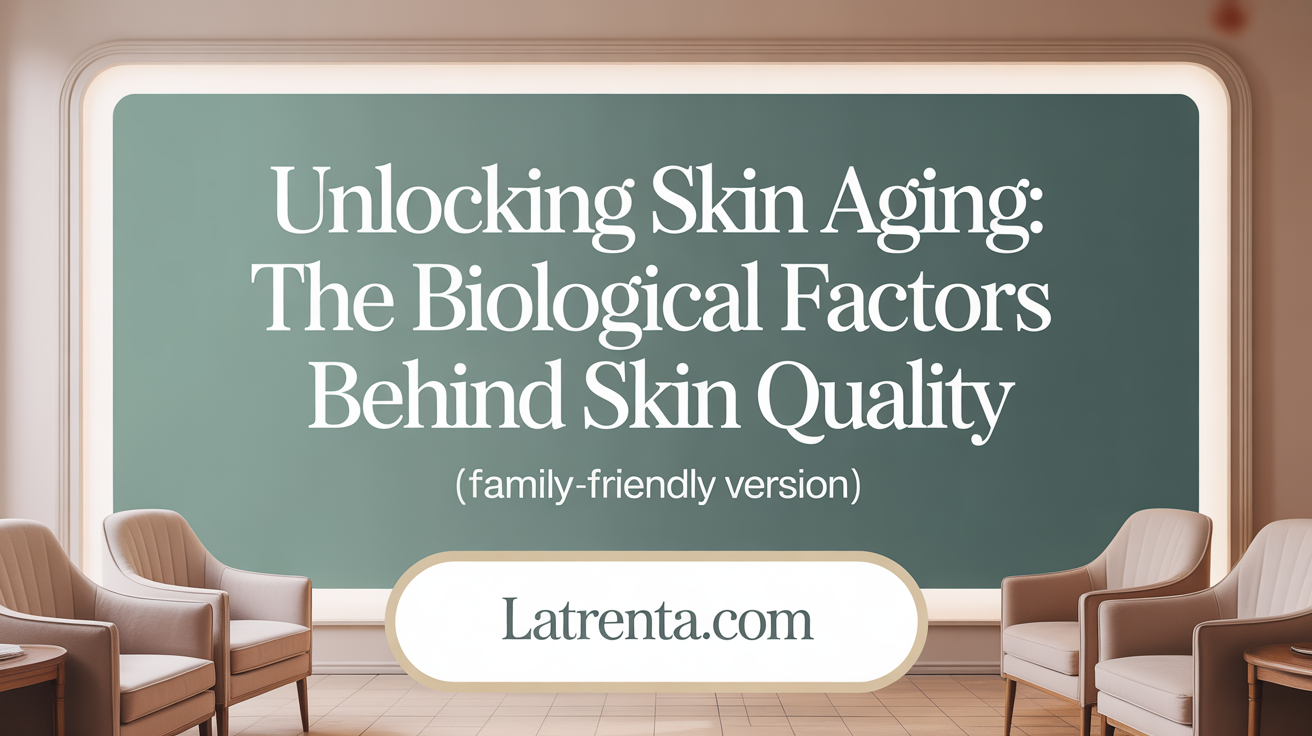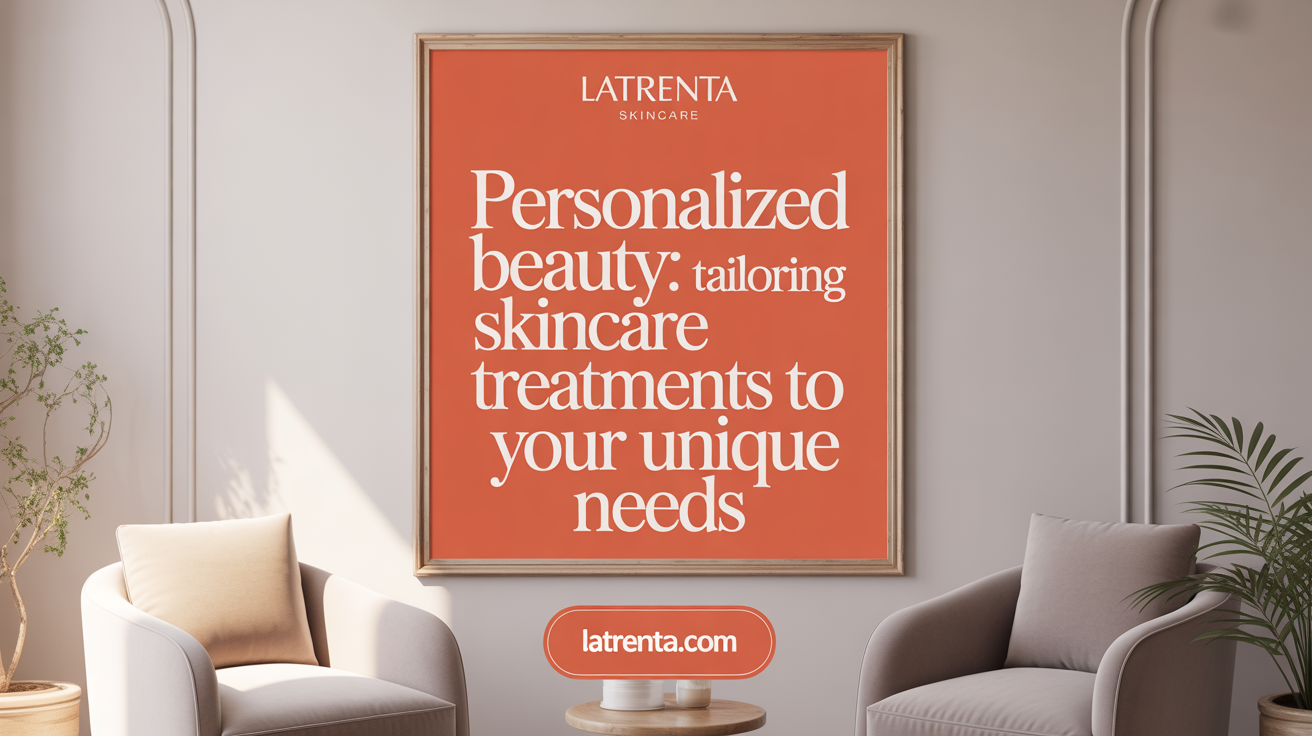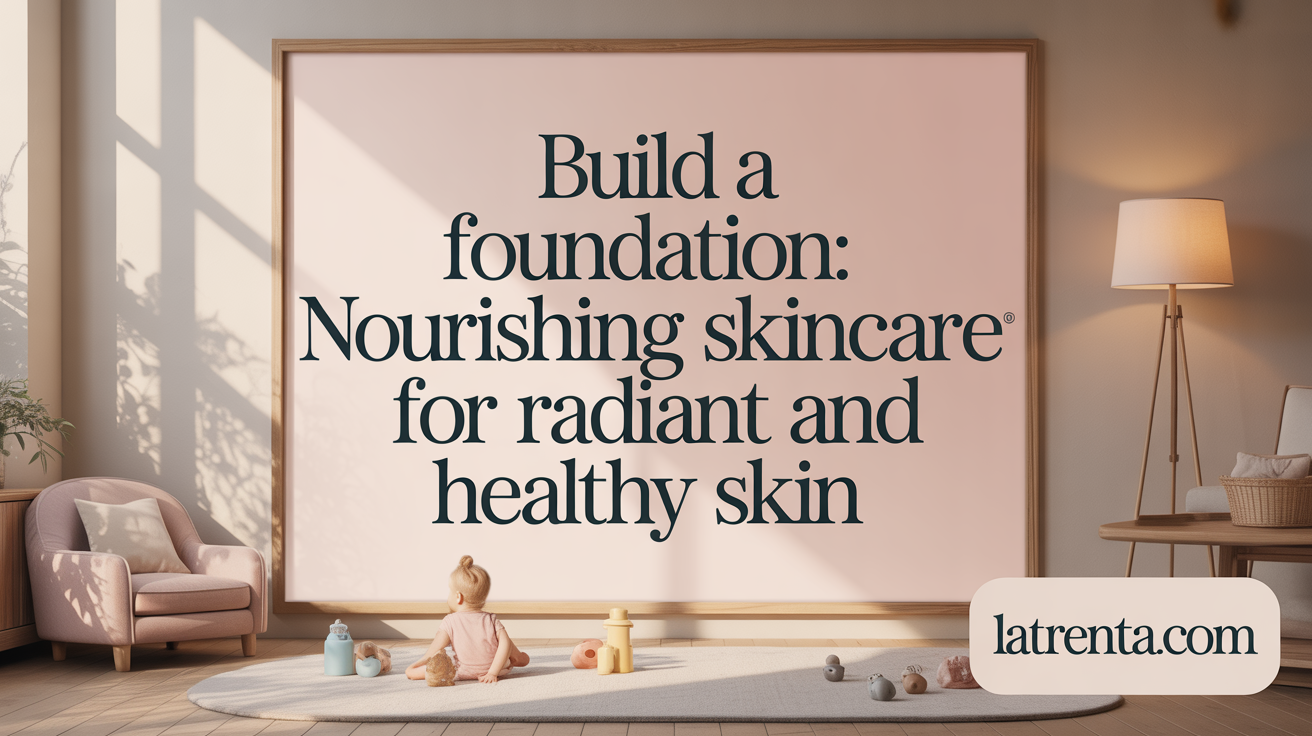Understanding Skin Quality and Its Impact on Aesthetic Treatments
Healthy, youthful skin is more than just a cosmetic ideal — it is the foundation upon which all successful aesthetic treatments are built. This article explores the multifaceted concept of skin quality, the scientific framework developed to assess it, and how it influences the outcomes and satisfaction derived from various cosmetic procedures. From biological underpinnings to advanced treatment algorithms, we delve into how maintaining and improving skin quality shapes the success of your aesthetic journey.
Defining Skin Quality: The Emergent Perceptual Categories Framework
What is the meaning of skin quality?
Skin quality is a term that describes the overall health, appearance, and resilience of the skin. It involves several aspects such as how smooth, even, moist, and protected the skin appears. Good skin quality is not just about surface look; it reflects the underlying condition and strength of the skin.
Achieving optimal skin quality requires more than superficial treatments. It involves a comprehensive approach including proper skincare, sun protection, and the use of targeted ingredients like antioxidants and retinoids. These practices help maintain the skin’s natural barrier and promote healthy renewal.
The Emergent Perceptual Categories (EPCs)
The EPC framework was developed to create a universal language for assessing skin quality. It identifies four main perceptual categories that encapsulate the attributes of healthy skin:
- Skin tone evenness
- Skin surface evenness
- Skin firmness
- Skin glow
These categories serve as a common reference point for clinicians and patients, enabling objective evaluation and targeted treatment strategies.
Key measurable skin quality attributes
Each EPC category includes specific, measurable attributes.
Skin firmness is evaluated by parameters like elasticity and hydration, often measured with tools such as the Cutometer. Treatments like biostimulators (e.g., calcium hydroxylapatite and hyaluronic acid) can enhance firmness.
Surface evenness covers features like pore size, wrinkles, scars, and skin texture, assessable through imaging systems like VISIA. Treatments may include laser, microneedling, and peels.
Tone evenness involves pigmentation and discoloration, which can be quantified using devices like Mexameter. It responds to topicals, laser therapies, and microinjections.
Glow signifies the skin’s radiance and luminosity, measurable with tools like the Glossymeter. It can be improved through treatments such as hyaluronic acid, CaHA, and skin-boosting peels.
Universal applicability across demographics and treatment modalities
One of the major strengths of the EPC framework is its universal relevance. It applies across all ethnicities and age groups, providing a consistent structure for assessment and treatment.
This framework supports a diverse array of treatment options, from topical agents and chemical peels to energy-based devices and injectables. It guides clinicians in customizing treatments to enhance each perceptual category, thereby improving actual skin health.
Scientific consensus and validation of EPC framework
The EPC approach was solidified through an international consensus published in 2021. A multinational advisory board used a modified Delphi method to reach agreement on defining skin quality via these categories.
Supporting research includes clinical studies and objective measurements, which confirm that the EPC categories accurately reflect skin health. The framework is also integrated into emerging treatment algorithms, expected to be published in 2025, to guide multimodal rejuvenation strategies.
This evidence-based model provides a robust foundation for advancing skin rejuvenation and maintenance, helping practitioners achieve predictable, natural, and lasting aesthetic results.
Skin Quality and Facial Attractiveness: The Visible Link
How important is skin quality in attractiveness?
Skin quality plays a vital role in how attractive a person appears because it directly reflects health and vitality. When skin is smooth, well-hydrated, and evenly toned, it contributes to a youthful and vibrant appearance that is widely perceived as attractive. Conversely, issues like wrinkles, uneven texture, or dullness—often caused by aging, sun damage, or lifestyle factors—can diminish this perception.
While symmetry, facial proportions, and expressions also influence facial beauty, skin quality provides a foundational aspect of overall attractiveness. Good skin acts as a canvas that enhances natural features and can mask underlying anatomical concerns.
Maintaining optimal skin quality involves proactive care. Routine application of sun protection with daily sunscreen, using appropriate skincare products enriched with antioxidants, peptides, and hydrators, along with a healthy lifestyle, significantly supports skin health. These measures help preserve the skin’s suppleness, brightness, and evenness, thus reinforcing a youthful and attractive appearance.
Overall, skin quality is not just an aesthetic attribute but a reflection of internal wellness, making it crucial for both personal confidence and social perception. Investing in skin health through preventative and restorative strategies can significantly impact one’s overall facial appeal and attractiveness.
Biological Foundations: Key Components Affecting Skin Quality and Aging

What factors affect skin quality?
Skin quality is fundamentally determined by the state of its major structural components: collagen, elastin, and hyaluronic acid. These substances ensure the skin remains firm, elastic, and well-hydrated, contributing to a healthy, youthful appearance.
As we age, intrinsic factors such as genetics and natural aging processes lead to a gradual decline in these critical components. Collagen and elastin fibers become less abundant and weaker, while hyaluronic acid levels drop, reducing skin’s ability to retain moisture. This deterioration results in decreased firmness, elasticity, and surface resilience.
External influences heavily impact this biological decline. Excessive sun exposure, pollution, smoking, poor diet, and stress accelerate the breakdown of collagen and elastin and impair the skin’s hydration capacity. UV radiation, in particular, triggers photoaging, which exacerbates texture irregularities and discoloration.
Visible signs of these changes include uneven surface texture marked by roughness or fine wrinkles, dull skin tone, and a loss of natural glow. The skin may feel dry, sagging, and less responsive to touch, all indicating compromised skin quality.
Understanding the biological basis for skin aging enables clinicians to select targeted aesthetic treatments. For example, laser therapies and injectables like biostimulators aim to stimulate collagen and elastin production, restoring skin firmness and texture.
Assessment tools are crucial in objectively measuring these parameters. Devices such as the Cutometer gauge skin elasticity, while imaging systems evaluate surface irregularities and pore size. Colorimeters and spectrophotometers measure pigmentation and skin tone evenness. Utilizing these technologies allows tailored interventions, improving outcomes by addressing the specific biological deficits affecting each patient’s skin quality.
Assessing Skin Quality: From Clinical Tools to Patient Perception
What objective measurement methodologies are used to assess skin quality?
To accurately evaluate skin health and quality, professionals rely on various scientific tools and imaging techniques. These methods include devices like the Cutometer, which measures skin elasticity, and the Corneometer, which assesses skin hydration. Additionally, imaging systems such as VISIA provide detailed analysis of surface features like pore size, wrinkles, and skin clarity. These tools enable clinicians to obtain precise data on key skin attributes, aiding in diagnosis and treatment planning.
Which instruments are used for evaluating firmness, tone, surface evenness, and glow?
Specific devices and imaging techniques target different aspects of skin quality:
| Attribute | Measurement Tools | What They Assess | Additional Notes |
|---|---|---|---|
| Firmness | Cutometer, Ultrasound devices | Elasticity, tautness, hydration | These tools help quantify the skin's ability to return to shape |
| Tone Evenness | Mexameter, Chroma Meter | Pigmentation, erythema, discoloration | Used to evaluate skin uniformity and presence of pigmentation issues |
| Surface Evenness | VISIA imaging, High-resolution cameras | Pores, crepiness, scars, skin texture | Visual assessments to guide laser or microneedling treatments |
| Glow | Mexameter, Glossymeter | Radiance, luminosity, vibrancy | Measures skin luminance and overall brightness |
These instruments support a comprehensive understanding of skin condition, facilitating targeted interventions.
How does the FACE-Q measure patient satisfaction and perceptions?
The FACE-Q is a validated patient-reported outcome instrument that captures perceptions about appearance, psychological wellbeing, social confidence, and the impact of aging. Patients complete questionnaires before and after treatments, providing valuable insights into how they perceive improvements and overall satisfaction. Studies have shown that minimally invasive procedures significantly improve FACE-Q scores across multiple domains, reflecting enhanced self-esteem and happiness with appearance.
Why is a thorough skin assessment important in planning aesthetic treatments?
Combining scientific measurements with subjective evaluations allows practitioners to formulate personalized treatment strategies. Accurate assessment of skin quality guides selection of appropriate modalities, such as energy-based devices, topical agents, or injectables. It also helps identify underlying issues like decreased collagen or elastin, which influence the choice and expected outcome of treatments. A comprehensive evaluation ensures realistic goals, improves results, and enhances patient satisfaction.
How are scientific assessments integrated with patient perceptions?
An optimal approach merges objective data with patient feedback. While instruments provide measurable indicators of skin health, patient-reported outcomes like those from FACE-Q reveal emotional and social impacts. This integration enables a holistic understanding of treatment effects, ensuring that interventions not only improve clinical parameters but also meet patient expectations and improve overall wellbeing.
Integrating Skin Quality into Personalized Aesthetic Treatment Plans

Initial comprehensive skin assessment
A thorough evaluation forms the foundation of a personalized aesthetic treatment plan. This includes assessing the four emergent perceptual categories (EPCs): skin tone evenness, surface evenness, firmness, and glow. Healthcare professionals use various measurement tools such as VISIA imaging for surface evaluation, Corneometer for hydration, and Mexameter for pigmentation. Understanding the current status of these skin attributes helps identify specific issues like dullness, uneven pigmentation, or loss of elasticity, guiding targeted interventions.
Tailoring treatments based on individual skin condition and goals
Every patient has a unique skin profile influenced by age, ethnicity, environmental exposure, and aesthetic aims. A personalized approach considers these factors to select suitable treatments—whether topical products, laser therapies, injectables, or combinations. For example, skin with loss of firmness might benefit from biostimulatory fillers such as calcium hydroxylapatite, while uneven tone may require pigment-targeted lasers or topical agents. This tailored strategy addresses the multilayered nature of skin health.
Use of multimodal treatments linked to skin quality outcomes
Using a combination of modalities enhances results by targeting multiple EPCs simultaneously. A typical regimen might include botulinum toxin for dynamic lines, hyaluronic acid fillers for volume, and laser treatments to improve skin texture and tone. The 2024 treatment algorithm emphasizes that these multimodal solutions should directly connect to improvements in skin quality parameters. This integrated approach ensures comprehensive rejuvenation, aligning outcomes with patients' desires for healthy, youthful-looking skin.
Benefits of personalized approaches
Personalized treatments result in more natural, harmonious results that meet individual expectations. They also reduce risks associated with overtreatment or mismatched interventions. Patients report higher satisfaction levels, as measured by tools like FACE-Q, which captures perceptions of appearance, psychological, and social wellbeing. Furthermore, tailoring treatments promotes better long-term skin health, encouraging ongoing maintenance through skincare and follow-up procedures.
Process from consultation to treatment and follow-up
The journey begins with a detailed consultation, including facial and skin assessments. A customized treatment plan is then designed, considering patient-specific skin issues and goals. Procedures are selected and scheduled, often combining multiple modalities for optimal effects. Post-treatment, skin is monitored, and supportive skincare with ingredients like antioxidants and peptides boosts healing. Regular follow-up ensures adjustments as needed, fostering continuous improvement and sustainable skin health.
Treatment Strategies to Improve Skin Quality and Enhance Aesthetic Outcomes

Is aesthetic treatment good for skin?
When appropriately selected and supervised by qualified professionals, aesthetic treatments can significantly improve skin health and appearance. They effectively address common skin concerns such as uneven texture, pigmentation issues, and signs of aging by stimulating collagen production, enhancing hydration, and promoting tissue remodeling.
A comprehensive approach often involves a mix of treatments, including biostimulatory fillers, botulinum toxin, and energy-based devices like lasers and radiofrequency systems. These modalities work synergistically to improve skin quality across different layers, leading to more natural and long-lasting results.
Emerging treatment algorithms integrate these options into multimodal strategies, linking specific skin quality outcomes—such as firmness, surface evenness, tone, and glow—to tailored interventions. For example, dermal fillers may restore volume and support, while skin tightening devices refine texture and firmness.
Injectable treatments like Restylane® SKINBOOSTERS™ deliver hyaluronic acid to enhance hydration, elasticity, and overall skin composition, resulting in a refreshed and radiant appearance. Topical agents—including antioxidants, peptides, and hydroxy acids—reinforce the skin barrier, improve tone, and reduce early aging signs.
Advances in skin rejuvenation technologies, such as fractional lasers, mesotherapy, and ultrasound devices, enable targeted correction of specific skin attributes. For instance, fractional lasers can smooth irregularities and scars, while microneedling and radiofrequency systems boost collagen and improve glow.
In sum, a personalized, multimodal treatment approach—combining minimally invasive procedures, topical regimens, and advanced technology—can markedly elevate skin quality. This holistic strategy enhances not only physical appearance but also psychological wellbeing, compensating for the skin's natural aging process and external damages.
The Psychological and Social Impact of Skin Quality on Treatment Satisfaction

Role of skin condition in patient confidence and well-being
Healthy, youthful skin significantly influences an individual’s confidence and overall well-being. When skin quality improves, patients often feel more comfortable in social settings and experience a boost in self-esteem. Visible skin issues like uneven surface, dull tone, and sagging can negatively affect how people perceive themselves, leading to increased self-consciousness.
FACE-Q validated outcomes following cosmetic procedures
Studies using the FACE-Q questionnaire—a validated instrument measuring satisfaction with appearance, psychological wellbeing, and social confidence—show that most patients report notable improvements after minimally invasive cosmetic procedures. These enhancements are particularly evident in increased satisfaction with appearance, a greater sense of psychological stability, and more positive attitudes towards aging.
Enhanced psychological and social well-being
When treatments effectively improve skin quality, patients often enjoy a ripple effect: higher self-esteem, better social interactions, and improved mental health. Feeling satisfied with their appearance reduces anxiety and self-doubt, encouraging more active social engagement and overall happiness.
Patient concerns regarding natural results and authenticity
A prevalent concern among patients is achieving natural-looking results. Many fear that aesthetic treatments might lead to an unnatural or ‘fake’ appearance. Skilled practitioners focus on personalized plans that enhance beauty subtly, maintaining facial harmony and ensuring results look authentic, which further supports psychological well-being.
Effect of combined treatments on improving patient-reported outcomes
Using combined approaches—like neuromodulators with fillers—often leads to greater improvements in patient-reported outcomes. Patients frequently report higher satisfaction, improved confidence, and a better perception of aging when multiple modalities work together—emphasizing the importance of tailored, multimodal treatment strategies.
This interplay between skin quality and psychological health underscores how aesthetic treatments do not solely improve physical features but also foster emotional strength and social confidence, contributing to overall quality of life.
Preventive and Supportive Skincare: Foundation for Lasting Aesthetic Success

Importance of sun protection and daily skincare routines
Protecting the skin from sun damage is essential for maintaining skin quality over time. Daily application of broad-spectrum sunscreen prevents photoaging, preserves skin elasticity, and maintains a healthy glow. A consistent skincare routine that includes cleansing, moisturizing, and sun protection supports overall skin health.
Medical-grade ingredients aiding skin repair and maintenance
Products containing medical-grade ingredients like antioxidants, peptides, and humectants significantly contribute to skin repair and maintenance. Retinoids, in particular, are highly effective anti-aging agents that stimulate collagen production and improve skin texture. Vitamin C brightens dull skin and reduces pigmentation, while alpha hydroxy acids promote cell turnover.
Post-procedure skin care to enhance healing and results
After aesthetic treatments, using targeted topical products can speed healing and optimize outcomes. Topicals with ingredients such as growth factors, hydrating agents, and scar recovery gels help minimize downtime and improve skin regeneration. Proper wound care, including cleansing and applying prescribed ointments, is crucial to reduce infection risk.
Balancing treatments with topical product usage
Combining procedural treatments with appropriate skincare enhances their efficacy. Products that promote collagen and elastin production support skin tightening and firmness, especially after procedures like laser resurfacing or microneedling. Patient education on product use ensures continued skin improvement outside the clinic.
Preventive aesthetic treatments starting in youth
Initiating preventive treatments early maintains skin health and delays aging signs. Light chemical peels, microneedling, and laser therapies help sustain collagen levels. Regular early interventions, such as preventive Botox, can inhibit deep wrinkle formation, promoting a youthful appearance for years.
A comprehensive approach combining sun protection, medical-grade skincare, post-procedure support, and early preventive care establishes a resilient foundation for lasting aesthetic results. Educating patients on these practices enhances satisfaction and prolongs the benefits of cosmetic procedures.
Skin Quality Across the Lifespan: From Prevention to Rejuvenation
Starting preventive treatments in early adulthood
Initiating skin-preserving routines in your twenties can have lasting benefits. Preventive measures such as light chemical peels, microneedling, Laser Genesis, and topical rejuvenators like antioxidants and retinoids help maintain collagen and elastin production. These treatments improve cell renewal, protect against environmental damage, and slow the onset of visible aging signs.
Early intervention not only sustains skin health but also reduces the need for more invasive procedures later. Regular professional skincare, including facials and treatments like laser therapy, supports long-term skin vitality, setting a foundation for healthier aging.
Maintaining collagen and elastin through age
As we age, the natural decline in hyaluronic acid, collagen, and elastin results in decreased skin firmness, elasticity, and glow. External factors like sun exposure further accelerate this deterioration. Focused treatments such as radiofrequency-assisted procedures, ultrasound devices, and PDO mini threads stimulate collagen production, helping to improve skin texture and firmness.
Products containing ingredients like retinoic acid, vitamin C, and peptides encourage dermal regeneration and hydration. Combining these with in-office procedures can delay visible aging, uphold skin elasticity, and sustain a youthful appearance.
Combining minimally invasive procedures with skincare
A comprehensive approach often involves blending injectable treatments like botulinum toxin and hyaluronic acid fillers with advanced skincare regimens. These combined modalities target multiple aging mechanisms—dynamic wrinkles, volume loss, and surface irregularities.
Post-procedure, medical-grade skincare with antioxidants, hydrators, and reparative agents promote healing, improve results, and prolong benefits. Regular maintenance treatments, tailored to individual skin needs, enhance overall skin quality and ensure natural-looking outcomes.
Addressing dynamic aging changes including volume loss and skin laxity
Facial aging involves complex changes across tissue layers, including bone resorption, fat redistribution, and skin laxity. Treatments such as HA fillers rebalance volume and reinforce projection, restoring contour and youthful proportions.
For skin laxity and sagging, non-surgical options like HIFU and thread lifts tighten skin effectively. Combining these with collagen-stimulating procedures enhances skin firmness and rejuvenation.
Comprehensive strategies for natural, youthful appearance over time
Achieving a natural, youthful look requires an individualized plan that incorporates preventive care, skin health optimization, and targeted aesthetic interventions. Starting early ensures slower aging progression, while ongoing treatments adapt to evolving skin conditions.
A facial assessment guides precise treatment allocation, addressing each person's unique anatomy and aging pattern. Emphasizing skin quality—its tone, surface, firmness, and glow—maximizes aesthetic outcomes.
In conclusion, a lifetime approach combining early prevention, collagen maintenance, minimally invasive procedures, and personalized strategies guarantees a vibrant, natural appearance that ages gracefully.
Building Beauty on a Foundation of Healthy Skin
Skin quality is undeniably central to the success of aesthetic treatments, influencing both the objective outcomes and the subjective satisfaction of patients. By understanding the key attributes of skin health—firmness, evenness of surface and tone, and glow—and incorporating this knowledge into personalized, research-supported treatment plans, clinicians can significantly enhance aesthetic efficacy. Preventive skincare, state-of-the-art technologies, and a holistic approach that values psychological well-being pave the way for natural, harmonious results that stand the test of time. Ultimately, investing in skin quality is investing in enduring beauty and confidence.
References
- Skin Quality: Defined by Global Consensus, Delivered Through ...
- Look Better, Feel Better, Live Better? The Impact of Minimally ...
- In the quest to look fresh – what is skin quality? | Galderma Aesthetics
- Facial Aesthetic Priorities and Concerns: A Physician and Patient ...
- How Skincare Products Can Improve Cosmetic Treatment Results
- Exploring the psychological and social motivations for aesthetic ...
- Personalized Aesthetic Treatments for Best Results - Endless Clinic
- Decades of beauty: Achieving aesthetic goals throughout the lifespan
